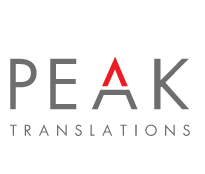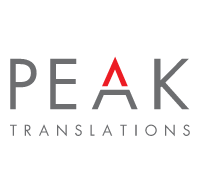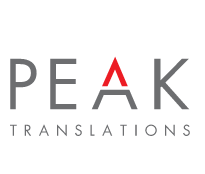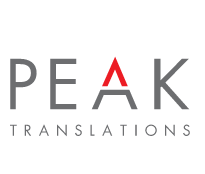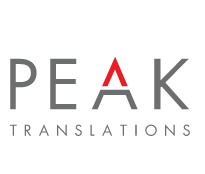Why context is key when translating for your business.
3 October 2016The context of a stand-alone word or word in a sentence, according to Managing Director of Peak Translations, Helen Provart, is the biggest challenge professional translation companies face during a project.
Lack of context is most common in singular words that are submitted as part of a document with no clarification of what they refer to. The user of a translation service may not have considered the significance of grammar and how a lack of clarity could lessen the efficiency of the translation process.
When translating business software, such as an internal CRM, sometimes translation companies come across individual words where it isn’t necessarily clear whether it is a verb, an instruction or a command.
Business Writer at Applegate Marketplace, James Jeffrey, interviewed Helen to find out exactly what is meant by ‘lack of context’ and how it can affect the clients of Professional Translations Services.
Helen Provart (HP) explains:
HP: "In English, it all depends on what kind of speech it is; it gets quite technical in terms of the grammatical relationship that word has with the meaning you want to get across.
"It’s complex, but it matters because English words can be the same regardless of whether they are commands, verbs or instructions. For example, ‘close’ the window or something is ‘close’ by.
"Whereas in other languages it is not the case, the word will change and be different depending on whether it’s a command, verb or instruction. This is where professional translation services can intervene to match the word in English to a number of words that convey that the relevant meaning in the foreign language they have requested."
JJ: Is there a good example in a combination of languages that you can think of?
HP: "If you think of a website, and picture a button with the word ‘insert’ written on it. What are you expecting it to do? Insert a page or take you to an ‘insert’ on another page?
"That, in a foreign language, would be totally different, one’s a noun, and one’s a verb. In English however, it is just ‘insert’. It might be the same word in English, but in the foreign language it is very unlikely that it will be."
JJ: How is that done? How do you know when there’s a difference?
HP: "We have to ask. The translator will highlight and say: ‘I need to know whether this is a verb or a noun.’ So we’ll go back to the client, and we’ll explain what we mean, rather than saying: ‘is this a verb or a noun’ as that can sometimes confuse people, and we get that.
"Are you trying to instruct somebody to insert something or are you trying to tell them that they need to go and look at this insert? And they’ll answer the questions, and we’ll say whether it is a verb or noun based on what they say."
JJ: I imagine that happens a lot, as not everyone uses that kind of language day-to-day so you need to provide some form of clarification.
HP: "The other example is: in one of the pieces of software there was an instruction to assign and an instruction to allocate. This was going into Turkish and assign and allocate are the same word in Turkish. So it was translated the same way but obviously because the client had used two different words it suggested that they had two different meanings, but we weren’t sure what they were so we had to investigate.
"We had to find out what the definitions were for both and how they differentiate and then find out how the Turkish could convey that in the translation because there was a clear difference."
JJ: So you not only have to clarify it with the client but also with the native speaker who translates the text.
HP: "That’s correct, so we had to explain to them what the client’s definition of assign and allocate was, and they would then have to come up with a solution in Turkish that would reflect those differences."
JJ: A lot of the time you really do have to rely on your clients having an advanced understanding of their own language. Not everyone, in my experience, is going to have that – so you’ll likely be provided with incorrect information and rely on your checking system to filter that out.
HP: "What we’re getting at here all boils down to the meaning of the word, that’s where the value lies in what we do.
"That’s why it’s not just a case of changing the words from one language to another, what we’re getting at is the meaning and what translation is really about is not just one language to another it’s taking the semantics of that sentence and getting the meaning of it across in a foreign language.
"We do it in English all the time. W-I-N-D, is it wind or wind? R-O-W, is it row or is it row? If you take those out of context, the only reason you know it’s wind or wind is because of the context of the rest of the sentence. But if you have a list, there’s no way of telling."
JJ: As a journalist, I have to use shorthand every day, where you take out all the vowels in English words. It would be very difficult to figure out what P-R-T is written in shorthand without the context of the rest of the sentence. Is it part, is it port? There would be no way of knowing.
HP: "I have one other example that emphasises this but also shows the issues when people translate. This is where we have a client that makes machinery that produces sprung mattresses and the software that the operator uses to operate it. We translated the manuals that explain to the operator how to use the machinery. The manuals contained screenshots of the software so in order to be consistent with the information the operator would see on screen, we had to ask them for the existing translation of the onscreen text.
"This is because that had already been translated we needed to make sure we were using the same terminology as this was just a list of words that were out of context. When we received the existing translation from the client, they had things like a ‘jam’ in the machinery and, because they had used Google Translate, it had been translated as the ‘jam’ that you put on your toast.
"That just shows what a lack of context can do. Obviously, a human translator is going to understand the context and will appreciate that they are translating a manual for a piece of machinery and will, therefore, know which version of the word to use."
Next month’s article will explore how to avoid these contextual pitfalls and how to become more time efficient and cost effective when using a translations service. To read more about Peak Translations, visit the company’s news page on the Applegate website.

